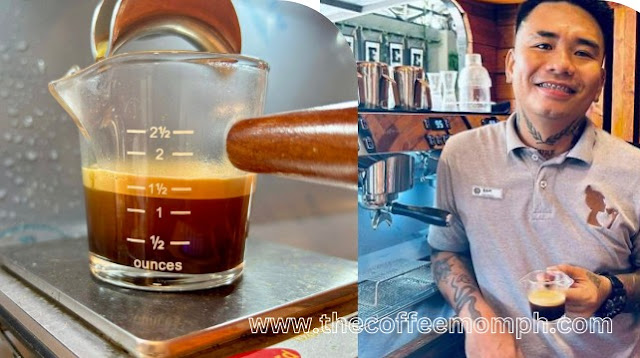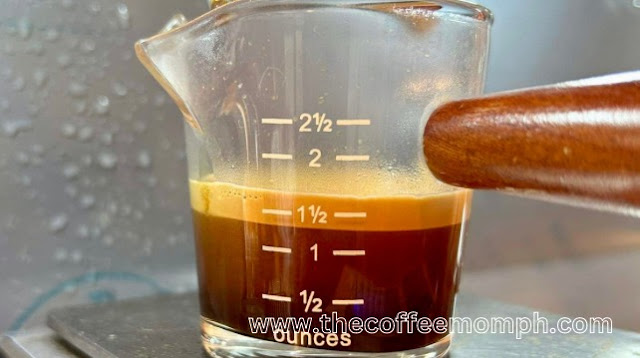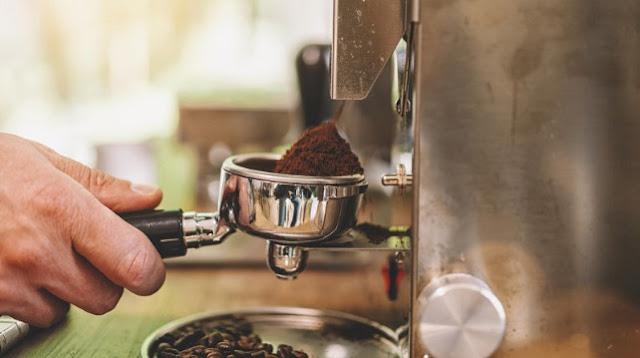What are the Qualities of a Good Espresso Shot?
Here at The Coffee Mom, the first and most important thing that our baristas follow and do before opening the shop is to calibrate until they get the perfect espresso shot. This process is essential for us to manually achieve consistency in our espresso extraction.
In other words, The Coffee Mom won't serve customers until our espresso shot achieves the perfect colors, layers, smell, hint, and taste. We don't just serve coffee; we serve excellence.
This article will tackle everything about calibrating espresso, what a perfect espresso shot looks and tastes like, the best and starting ratio, etc.
How do You Identify a Perfect Espresso Shot?
Crema
The first thing to observe is the crema, the foam layer that forms on top of a well-extracted espresso shot. The crema should be thick, velvety, and have a rich reddish-brown color. It acts as an indicator of freshness and extraction quality.Aroma
A good espresso shot should have a captivating and aromatic fragrance. When you bring the cup close to your nose, you should be greeted with enticing notes of roasted coffee, chocolate, caramel, or any other characteristic scent associated with the coffee beans used.Body
The body refers to the texture and weight of the espresso shot in your mouth. It should have a rich and syrupy consistency, coating your tongue and providing a satisfying mouthfeel. This contributes to a more pronounced flavor experience.Flavor
A well-prepared espresso shot should have a balanced and complex flavor profile. It should offer a harmonious blend of sweetness, acidity, and bitterness. The specific flavors can vary depending on the beans used, but you should be able to discern a pleasant mix of fruity, nutty, or chocolatey undertones.Balance
The flavors in a good espresso shot should be well-balanced, with no single element overpowering the others. The sweetness should counteract the bitterness, and the acidity should provide a lively and vibrant character without being overly sharp.Extraction Time
The ideal extraction time for an espresso shot falls within the range of 20-30 seconds. This timeframe allows for the extraction of desirable flavors while avoiding excessive bitterness.If the shot pulls too quickly, it may result in a weak and under-extracted espresso, while an overly long extraction can lead to a bitter and over-extracted shot.
Temperature
Temperature is crucial in espresso extraction. The water should be heated to around 195-205°F (90-96°C) for optimal extraction. If the water is too cold, the shot may taste weak and lack flavor, while boiling water can lead to a burnt or bitter taste.Consistency
A good espresso shot should be consistent in quality, meaning each shot pulled should meet the same standards. This consistency ensures that customers can confidently enjoy their espresso, knowing they will always experience the same level of excellence.How do You Taste Espresso Properly?
Preparation
Ensure your espresso is freshly extracted and served at the appropriate temperature. Taste the espresso as soon as possible after extraction is crucial to capture its optimal flavor.Observe the Appearance
Take a moment to examine the visual aspects of the espresso. Look at the crema on top, noting its color, thickness, and texture.Evaluate the Aroma
Hold the cup close to your nose and inhale deeply to absorb the aroma. Pay attention to the different scents you detect, such as notes of chocolate, fruit, flowers, or spices. The smell can give you an indication of the flavors you might expect.Take Small Sips
When you're ready to taste the espresso, take small, controlled sips rather than drinking it all at once. This allows you to experience the flavor profile and analyze its components fully.Assess the Flavor
As you sip the espresso, let it spread across your palate and coat your tongue. Pay attention to the initial flavors that hit your taste buds, the development of flavors as you sip, and the aftertaste or finish. Look for sweetness, acidity, bitterness, and any specific flavor notes that stand out.Consider the Body and Mouthfeel
Notice the weight and texture of the espresso in your mouth. Is it light-bodied or full-bodied? Is it smooth and creamy or thin and watery? The mouthfeel contributes to the overall sensory experience.Reflect on the Balance
Evaluate how the different flavor components—sweetness, acidity, and bitterness—interact. Is there a good balance between these elements, or is one flavor overpowering the others? A well-balanced espresso should have a harmonious combination of flavors.Note the Finish
Pay attention to the lingering aftertaste or finish of the espresso. Does it leave a pleasant, clean sensation, or is there any undesirable bitterness or acidity? The finish can provide insights into the overall quality of the espresso.Take Notes
Consider taking notes if you're tasting multiple espressos or want to remember your impressions. Write down your observations about the aroma, flavor, body, balance, and finish of each espresso you taste. This helps develop your palate and allows you to compare and remember different coffees.What is the Best Ratio for Espresso?
Conclusion
The qualities of a good espresso shot can be summed up as a harmonious combination of taste, aroma, and texture. A well-prepared espresso shot balances acidity, bitterness, and sweetness, creating a complex and enjoyable flavor profile. It should smell inviting, with distinct notes that entice the senses.Additionally, the texture of the espresso should be velvety and smooth, with a rich crema on top. Achieving these qualities requires attention to detail in every step of the espresso-making process, from selecting high-quality beans to mastering the brewing technique.
A good espresso shot is a testament to the barista's skill, precision, and passion, providing a delightful experience for coffee enthusiasts worldwide.
If you're interested in seeing and even tasting a perfect espresso shot, you're more than welcome to visit us at The Coffee Mom at 30 Perez Avenue San Sebastian Village Gate 3 Tarlac City, Tarlac.







